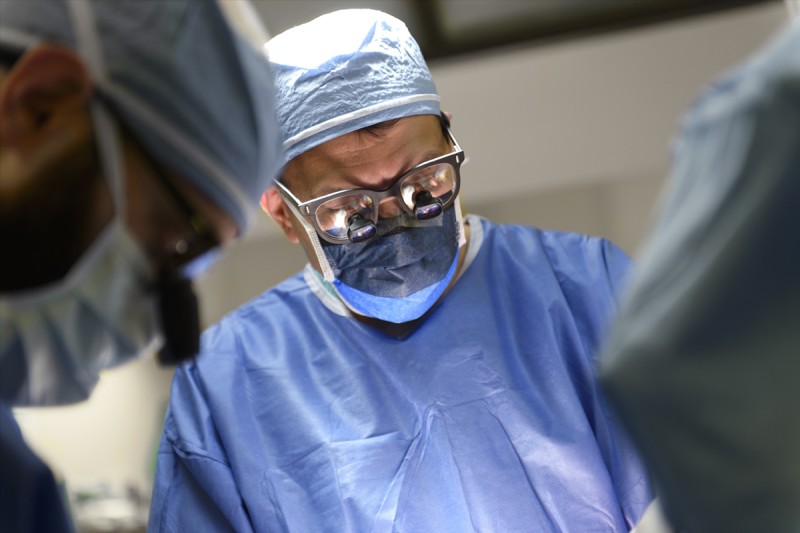
Emerging evidence shows that immediate autologous breast reconstruction can tolerate radiotherapy better than previously thought in select cases.
Radiation can have major deleterious effects on the cosmetic outcomes of reconstructive procedures. (1) As a result, the timing of reconstruction in women who may require post-mastectomy radiotherapy (PMRT) is a heavily debated topic.
Some surgeons consider PMRT to be a relative contraindication to immediate reconstruction and advise women to undergo mastectomy, PMRT, and then reconstruction six to 12 months later. Increasingly, however, other surgeons take into consideration the psychological and technical benefits of immediate reconstruction and recommend it, recognizing that outcomes in these women may be suboptimal though still equivalent or superior to delayed reconstruction.
In my recent paper published in the Lancet in December 2017, (1) I collaborated with colleagues at three other academic cancer centers to summarize the challenges, controversies, and latest evidence on the optimal approaches for integrating post-mastectomy radiotherapy with breast reconstruction.
The rates of immediate reconstruction (breast reconstructive procedures that are performed at the time of mastectomy) have steadily increased during the past two decades. Thus, while only 15 percent of women who underwent mastectomy had immediate reconstruction in 2011, this number has increased to about 40 percent in 2018. (2), (3), (4)This is important because immediate reconstruction can offset the psychosocial and physical consequences of mastectomy. In addition, immediate reconstruction is technically easier to perform than delayed reconstruction due to decreased scarring and preservation of the breast contours.
These reconstructive trends have coincided with the increasing use of post-mastectomy radiotherapy in women with locally advanced breast cancer. (4)
In our study we found a wide spectrum of choices for the type of reconstruction and timing of procedures. One of the most significant insights was the emerging evidence that immediate autologous reconstruction can tolerate radiotherapy better than previously thought in select cases. We also found that the timing of radiation treatment for patients who have implant reconstruction does not significantly impact the final outcome and should be individualized depending on clinical and other factors. (1)
Temporary Implants in Women Who May Need Radiation
In some women, it is unclear if they will require PMRT until their mastectomy and lymph node sampling is performed. This is a reconstructive dilemma, since it is difficult to provide adequate counseling regarding the potential effects of PMRT on cosmetic outcomes. In some cases, the use of temporary implants (tissue expanders) is helpful, since this approach enables the plastic surgeon to preserve the breast skin and contours after mastectomy while awaiting the decision for PMRT following review of the pathology results. This approach preserves the woman’s choice to undergo implant or autologous reconstruction while facilitating delivery of PMRT.
Autologous Reconstruction and PMRT Timing
Historically, most surgeons have not recommended autologous tissue reconstruction in patients who will require PMRT. This position stems from a study in 2001 that found higher rates of fat necrosis and volume in women who underwent immediate reconstruction with autologous tissues followed by subsequent treatment with PMRT. (5)
But later evidence in a 2014 systematic review found that autologous reconstruction results in acceptable outcomes in select patients who undergo PMRT following reconstruction. (6)These authors suggested that immediate reconstruction with autologous tissue is a viable approach in women who have adequate tissue to compensate for the shrinkage that may occur following PMRT. Another study by the Mastectomy Reconstruction Outcomes Consortium (MROC), the most compelling prospective evidence to date, analyzed results for 175 women who received either immediate or delayed autologous reconstruction with PMRT at 11 North American centers. There was no significant difference in postoperative complications between the groups after one year (25.9 percent and 26.9 percent respectively; p=0.54). (7) More importantly, women who had immediate reconstruction had improved patient-reported outcomes and satisfaction with their reconstruction.
Implant Reconstruction and PMRT Timing
Implants are also a viable option for some women who require PMRT. In most cases these procedures are performed as a two-stage process in which a temporary implant (a tissue expander) is placed after the mastectomy, inflated over time with saline in follow-up visits, and switched to a permanent implant after chemotherapy has finished. For women who require PMRT, there has been much debate regarding optimal timing for the expander-implant exchange relative to PMRT. Work published by my colleagues at MSK has suggested that the exchange of the expander to the final implant prior to PMRT results in improved outcomes. However, prospective data from a 2016 MROC study found that there was no difference in outcomes between those who received radiotherapy delivered to a tissue expander compared to those with a permanent implant. (8) Clearly, this topic requires additional study.
Advancing the Integration of PMRT and Breast Reconstruction
When is the best time to get breast reconstruction surgery?
New surgical and radiotherapy techniques have significant potential to improve patient outcomes in the future. Advances in radiotherapy techniques — including intensity-modulated radiation therapy, volumetric-modulated arc therapy, and proton therapy — are exciting options that require further study.
Choosing the optimal treatment plan requires multidisciplinary coordination between the patient, breast surgeon, plastic surgeon, medical oncologist, and radiation oncologist. At MSK, the highest-volume breast cancer referral center in the United States, doctors perform more than 400 autologous breast reconstructions and nearly 1,000 implant-based reconstructions annually. MSK is committed to helping women with breast cancer achieve the best possible outcomes.


